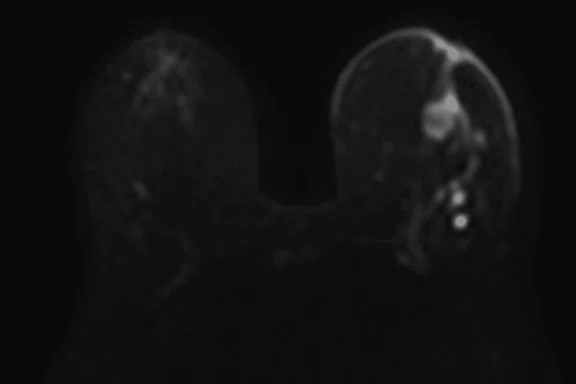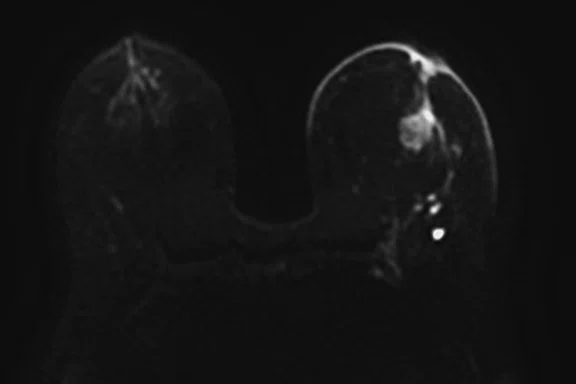A
(A) Axial DWI b600, 3.8 x 2.8 x 3.5 mm and (B) axial DWI MUSE, b600, 2.3 x 2.3 x 3.5 mm.
B
(A) Axial DWI b600, 3.8 x 2.8 x 3.5 mm and (B) axial DWI MUSE, b600, 2.3 x 2.3 x 3.5 mm.
2. Onishi N, Sadinski M, Hughes MC, et. al. Ultrafast dynamic contrast-enhanced breast MRI may generate prognostic imaging markers of breast cancer. Breast Cancer Res. 2020 May 28;22(1):58. doi: 10.1186/s13058-020-01292-9. PMID: 32466799; PMCID: PMC7254650.
result


PREVIOUS
${prev-page}
NEXT
${next-page}
Subscribe Now
Manage Subscription
FOLLOW US
Contact Us • Cookie Preferences • Privacy Policy • California Privacy PolicyDo Not Sell or Share My Personal Information • Terms & Conditions • Security
© 2024 GE HealthCare. GE is a trademark of General Electric Company. Used under trademark license.
NEWS
DISCO may provide prognostic imaging markers in breast cancer
DISCO may provide prognostic imaging markers in breast cancer
Researchers have found a relationship between ultrafast DCE-MRI-derived kinetic parameters generated by Dynamic Scan Optimization (DISCO) and breast cancer characteristics, suggesting that DISCO may generate prognostic imaging markers. The authors retrospectively reviewed 125 breast exams with 142 biopsy-proven breast cancer lesions and found that invasive carcinoma had significantly larger maximum slope (MS) and shorter bolus arrival time (BAT) than ductal carcinoma in situ (DCIS). More aggressive invasive carcinoma (grade 3) also has much shorter BAT than less aggressive characteristics (grade 1-2)2.
The authors wrote that these results, "suggest the ability of these parameters to serve as prognostic imaging markers. Although biomarkers from tissue samples are the standard practice for breast cancer management at this time, the two prognostic imaging markers may facilitate our understanding of tumor biology because MRI can capture ‘live’ tumors noninvasively." This may be particularly valuable information for patient monitoring during neoadjuvant therapy.










